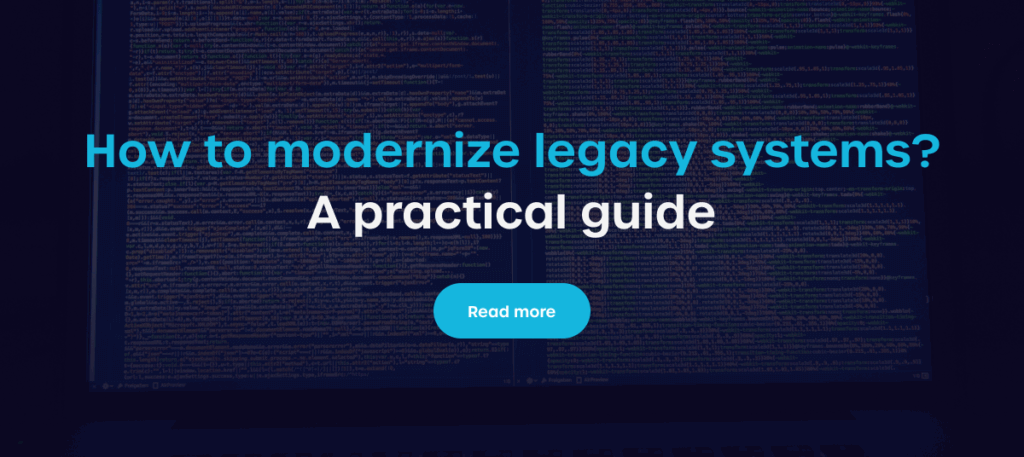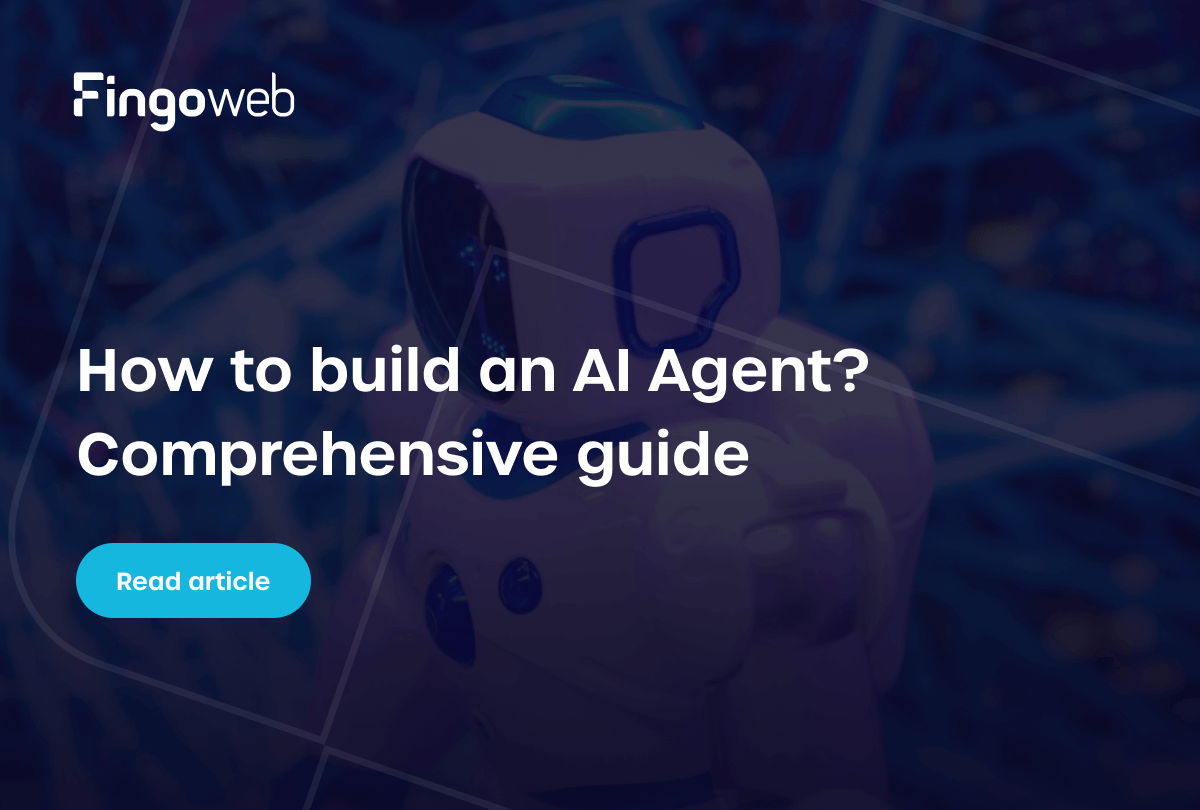ERP modernization is becoming a priority for companies that want to stay efficient as their systems age and business needs evolve. Many organizations still rely on legacy, on-premises ERP platforms, even though satisfaction is falling; an IDC Report shows that only 38% of companies in 2024 consider their on-premise ERP fit for purpose, down from 70% in 2021. This decline reflects growing pressure to improve flexibility, integrate new technologies, and reduce maintenance burdens.
Modernization is no longer just a technical upgrade but a strategic shift toward more adaptable and resilient operations. This article breaks down when ERP modernization makes sense, why it has become so important, and how to approach it in a structured and successful way.
When is the right time to modernize your ERP?
Identifying the right moment for ERP modernization is essential for maintaining operational efficiency and competitiveness in fast-paced business environment. Few indicators can help determine whether your legacy system or legacy app is causing more harm than good.
Operational signs your ERP is holding the business back
When daily operations slow down or teams struggle to get reliable insights, it often signals deeper limitations within an outdated ERP. Legacy architectures, fragmented databases, and outdated integrations can quietly accumulate technical debt that directly impacts decision-making and efficiency. Recognizing these early warning signs helps businesses act before operational friction turns into costly disruption.
Common operational signs your ERP is holding the business back:
- Reporting delays caused by slow data processing, overnight batch jobs, or non-optimized legacy queries.
- Difficulty accessing real-time data due to siloed modules or outdated database structures.
- Frequent manual data entry because the system lacks modern automation or API-driven integrations.
- Growing reliance on spreadsheets as “workarounds” for tasks the ERP should support natively.
- System crashes or performance degradation during peak usage, often linked to aging infrastructure.
- Inability to adapt workflows without custom code, making even small process changes slow and expensive.
- Limited integration capabilities that block adoption of new tools such as CRM, BI platforms, or AI-assisted analytics.
- Rising maintenance costs due to legacy technologies no longer supported by vendors.
- Security risks from outdated components or lack of compliance with newer data standards.
Identifying these symptoms early allows organizations to plan an ERP modernization path that reduces operational friction and restores agility.
Technology indicators that the ERP modernization is needed
Technology indicators often reveal that an ERP system is outdated long before operational issues become visible. When a legacy software built on older frameworks such as PHP Yii, CakePHP, early Drupal versions, Django 1.x, or older Ruby on Rails releases struggles to integrate with modern tools, it becomes clear the architecture can no longer keep up with current standards. Limitations such as the lack of mobile accessibility, absence of API endpoints, or reliance on monolithic code make it difficult to extend the system or connect it with modern services like BI platforms or cloud-based CRMs.
Performance issues including slow processing times, high memory usage, and periodic downtimes are common in systems that were never designed for today’s scalability requirements. These challenges strongly justify an ERP modernization effort that replaces rigid legacy components with modular, API-first architecture built in Laravel, enabling better integration and faster feature development. Paired with feature flags and step-by-step module migration, this approach allows organizations to modernize their ERP without downtime while maintaining full business continuity.
Business triggers that demand an upgrade
Business changes often expose the limitations of aging ERP systems, especially when regulations, markets, or internal operations evolve faster than the technology supporting them. When these shifts create gaps in compliance, reporting, or scalability, it becomes clear that an upgrade is no longer optional.
- New regulatory requirements that demand accurate, auditable, and timely reporting.
- Expansion into new markets or regions that requires multi-currency, multi-language, or multi-entity support.
- Rapid team growth that exceeds the performance or user capacity of the legacy ERP.
- New product lines or service models that the old system cannot easily accommodate.
- Increased customer expectations for faster response times or real-time data access.
- Changes in supply chain partners or logistics workflows that require flexible integrations.
- Strategic shifts such as adopting subscription models or e-commerce channels that legacy architectures cannot support.
- Mergers or acquisitions that require unified data and standardized processes across entities.
Recognizing these business triggers early helps organizations modernize before misalignment turns into operational risk.

Why does modernizing your ERP matter?
Modernizing your ERP is important not just for staying relevant but also for enhancing overall business performance and customer satisfaction. An updated system allows organizations to leverage advanced technology and maintain an agile, efficient operational framework.
Improved efficiency and reduced operational costs
ERP modernization directly translates into tangible business value, primarily through improved efficiency and reduced operational costs. Retiring sluggish legacy code allows businesses to streamline processes that were once bogged down by outdated code and complex integrations. This optimization minimizes manual data entry and workflow friction, liberating employees to focus on high-value tasks.
By automating core functions like inventory management and financial reporting, organizations achieve higher throughput with lower operational expenditure. Ultimately, a modern ERP system delivers a superior return of investment by ensuring faster, more accurate execution across the enterprise.


Better decision-making through real-time data
Modernizing your ERP is crucial for transforming raw data into a competitive advantage. Next-generation systems offer sophisticated advanced analytics capabilities, ensuring organizations access real-time operational and financial metrics. This immediate, high-fidelity insight enables managers to move away from slow, reactive planning based on outdated reports, leading directly to smarter, more agile decision-making.
- Improved demand forecasting: By integrating sales, supply chain, and historical trend data, modern ERPs use predictive models to increase forecast accuracy by up to 20%, minimizing buffer stock and reducing inventory costs.
- Enhanced financial visibility: Real-time dashboards provide instant views of key performance indicators (KPIs) like current burn rate and cash flow, replacing end-of-month reconciliations and speeding up month-end closes.
- Operational anomaly detection: Systems equipped with Machine Learning (ML) monitor transaction streams to flag unusual patterns immediately, proactively identifying potential fraud or supply chain bottlenecks before they escalate.
- Strategic resource allocation: Managers can quickly visualize the impact of potential decisions (e.g., adding a new production line) across all linked departments, ensuring optimal allocation of both human and capital resources.
Ultimately, shifting from delayed reporting to real-time data streams makes the entire organization more responsive, predictable, and strategically aligned.
Enhanced security, compliance, and scalability
Modernizing your ERP system is essential for minimizing organizational risk and enabling future growth. Contemporary platforms inherently offer enhanced security features, including advanced encryption protocols and sophisticated access controls, providing robust protection against increasingly complex cyber threats. Furthermore, updated systems ensure continuous adherence to evolving global and regional regulations (e.g., GDPR or industry-specific mandates).
Crucially, modernization eliminates the constraints of rigid legacy architecture, delivering the necessary scalability and flexibility to adapt the system seamlessly to increased transaction volumes and expansion into new markets. This proactive investment ensures that the ERP remains a growth enabler, not a bottleneck.

How to modernize your ERP successfully?
To achieve successful ERP modernization, it’s essential to approach the project with a well-defined, strategic roadmap. This process goes beyond a simple technical upgrade, requiring a clear vision for the target architecture and operational improvements. This includes selecting the right modernization approach – whether it’s a full re-platforming, selective module replacement, or adopting a hybrid solution – while ensuring effective planning and continuous collaboration with experienced professionals.
Choose the correct ERP modernization approach
Determining whether to upgrade your existing ERP system or replace it entirely is a pivotal decision in the modernization process. This choice dictates the project's scope, timeline, and associated risks, demanding careful strategic planning. Assessing the specific needs of your business, the technical limitations of your current legacy code, and your long-term goals are crucial for selecting the best ERP modernization approach.
- Big Bang Implementation: This approach involves replacing the entire legacy app with a new one at a specific, predetermined date. It offers fast results and minimizes the cost of running two systems simultaneously, but it carries the highest risk due to the immediate, organization-wide cutover.
- Phased Rollout: The new system is implemented module by module or department by department, allowing for gradual user adaptation and lesson integration. While it reduces immediate risk, it extends the project timeline and introduces complexity due to the need for temporary bridging interfaces between the old and new systems.
- Platforming (Re-platforming): This strategy focuses on migrating the existing application to a new, modern platform (e.g., cloud environment or a new operating system) without significantly changing the underlying codebase. It enhances stability and security but does not address functional limitations or technical debt within the application itself.
- Custom Modular Development: This involves using a software house to build modern, bespoke modules to replace only the most critical, performance-hindering parts of the legacy ERP (e.g., custom production planning or logistics). This hybrid model offers maximum flexibility and ROI by solving specific business pain points without a full system overhaul.
Ultimately, the optimal strategy requires a detailed technical debt assessment and a clear alignment between the chosen approach and your organizational tolerance for disruption.
Plan the ERP modernization project with clear scope and priorities
Successful ERP modernization projects require meticulous planning underpinned by a clearly defined scope and set priorities. This crucial phase involves a comprehensive assessment of the functionalities of your legacy application and determining which features need enhancement versus complete overhaul for maximum impact on efficiency and business value.
A professional technical audit is necessary to map the existing architecture, identify areas of high technical debt, and accurately estimate the effort required for remediation. Furthermore, scope definition must strictly align with current and future business requirements, ensuring resources are prioritized toward modules that deliver the highest competitive advantage and operational gain.
Partner with an experienced software house
Choosing the right technology partner can significantly influence the success and reduce the inherent risk of your ERP modernization initiative. A specialized software house like Fingoweb brings the deep technical competence necessary to successfully navigate the complexities of transitioning from rigid legacy systems to a more agile and advanced ERP platform. Their expertise is crucial not only in executing complex code migration but also in providing custom development solutions tailored specifically to your unique workflows that off-the-shelf software cannot meet.
Fingoweb has a proven track record in legacy system modernization, having successfully upgraded mission-critical platforms for clients like Vheda Health and IMS Sensory Media, ensuring seamless transition and operational continuity. Effective collaboration guarantees that the modernization strategy is technically sound, minimizes operational disruption, and delivers a future-proof, high-performance solution

FAQ - ERP Modernization
How long does an ERP modernization project usually take?
The duration of an ERP modernization project can vary widely based on the complexity of the legacy system and the chosen approach for modernization. On average, projects can take anywhere from a few months to over a year to complete, with thorough planning and execution being key to success.
Is it better to rebuild the ERP from scratch or upgrade the existing one?
The decision to rebuild your ERP system from scratch or upgrade the existing one depends entirely on a thorough assessment of your current system's technical debt and future strategic needs.
- Rebuild (Greenfield): Recommended if the legacy code is fundamentally flawed, lacks integration capabilities, or cannot support crucial future technologies (e.g., IoT, AI), offering maximum flexibility but the highest cost.
- Upgrade (Modernization): Viable if the core system is stable and functional, but requires specific, modular improvements (e.g., replacing the UI or a single outdated database module), offering lower initial cost and faster deployment.
- Hybrid Approach: Often the best compromise, involving rebuilding only the mission-critical, performance-hindering modules while retaining stable, custom logic from the original system.
Ultimately, a detailed technical audit and a clear ROI calculation are required to determine which path provides the most value for your organization.
What are the biggest risks in ERP modernization and how to reduce them?
Major risks in ERP modernization include data loss, disruption to business operations, and budget overruns. Implementing thorough testing phases, clear communication throughout the project, and active risk management strategies can significantly mitigate these risks and lead to a smoother transition.
How much does ERP modernization typically cost for a mid-sized company?
The costs associated with ERP modernization for a mid-sized company can range significantly based on project scope and requirements. On average, businesses should budget for anywhere from tens of thousands to several hundred thousand dollars, factoring in software, training, and support fees.







